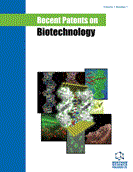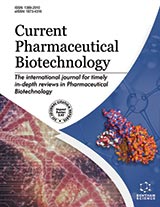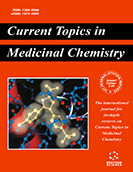Abstract
Background: Schistosoma mansoni poses a considerable global public health challenge. In Egypt, approximately 60% of the inhabitants in the Northern and Eastern areas of the Nile Delta are affected by this parasite, whereas the Southern region experiences a significantly lower infection rate of 6%.
Aim: Construction of an immune phage display Nbs library based on the VHH framework for selecting S. mansoni-specific Nbs for seeking cost-effective, sensitive, and specific diagnostic tools for rapidly detecting Schistosoma mansoni.
Methods: Camel was immunized using soluble adult worm antigens (SAWP) for the production of Variable domains of heavy chains of camelid heavy-chain only antibodies (VHHs), which are known as nanobodies (Nb). The PBMCs repertoires VHH sequences library have been constructed with a high percentage of insertion and right orientation using pADL-23c phagmid and M13 phage followed by three rounds of bio-panning against SAWP using phage display technique. Evaluations using polyclonal phage ELISA and other techniques have been carried out to reveal the successful enrichment of anti-SAWP Nbs (VHH) clones. Evaluation of the diagnostic potentiality of these Nbs was carried out using ELISA on human serum samples confirmed for S. mansoni infection. Receiver Operator of Characteristics (ROC) curve analysis was used for discrimination between S. mansoni infection and both negative controls and the Fasciola hepatica group.
Results: Using monoclonal ELISA, Nbs of 22 clones out of 24 selected clones showed binding affinity to SAWP. The cutoff values of the produced anti-S. mansoni Nbs was > 0.19, leading to 80% sensitivity, 95% specificity, and 90% accuracy. Sequence analysis of three of these Nbs with high binding affinities showed diversity in their targets, considering their CDR3 aa sequences.
Conclusion: This study successfully generated a diverse phage library enriched with anti-S. mansoni VHHs. The nanobodies produced exhibit high diagnostic potential for detecting S. mansoni infection in human patients, offering a promising avenue for the development of efficient diagnostic tools. The innovative approach described herein may have potential applications for patent considerations in the field of the field of diagnostic technology.
[http://dx.doi.org/10.3390/jcm10235521] [PMID: 34884223]
[http://dx.doi.org/10.3389/fitd.2021.722438]
[http://dx.doi.org/10.3389/fimmu.2021.642383]
[http://dx.doi.org/10.1016/S1473-3099(21)00090-6] [PMID: 34863336]
[http://dx.doi.org/10.1371/journal.pntd.0010151] [PMID: 35073344]
[http://dx.doi.org/10.1016/j.crimmu.2021.03.002] [PMID: 35492397]
[http://dx.doi.org/10.1186/s40364-021-00332-6] [PMID: 34863296]
[http://dx.doi.org/10.3390/ijms24065994] [PMID: 36983063]
[http://dx.doi.org/10.1007/978-1-61779-931-0_3] [PMID: 22723093]
[http://dx.doi.org/10.3390/toxins10060236] [PMID: 29890762]
[http://dx.doi.org/10.3389/fimmu.2020.01986]
[http://dx.doi.org/10.1016/j.genrep.2019.100577]
[http://dx.doi.org/10.1016/j.arabjc.2022.103799]
[http://dx.doi.org/10.33263/BRIAC106.71987208]
[http://dx.doi.org/10.3389/fvets.2018.00250] [PMID: 30370272]
[http://dx.doi.org/10.2174/1872208314666201112105053] [PMID: 33183215]
[http://dx.doi.org/10.12692/ijb/12.4.313-330]
[http://dx.doi.org/10.31838/ijpr/2020.SP2.460]
[http://dx.doi.org/10.1002/0471142735.im0217s103] [PMID: 24510545 ]
[http://dx.doi.org/10.1049/enb2.12021] [PMID: 36969104]
[http://dx.doi.org/10.1007/BF02876605] [PMID: 23986]
[http://dx.doi.org/10.1128/aem.60.9.3462-3465.1994] [PMID: 16349397]
[http://dx.doi.org/10.1016/j.biopha.2021.111328] [PMID: 33571835]
[http://dx.doi.org/10.1177/1087057104271956] [PMID: 15799954]
[http://dx.doi.org/10.1093/protein/gzl036] [PMID: 16984950]
[http://dx.doi.org/10.1007/s00253-023-12408-4] [PMID: 36773062]
[http://dx.doi.org/10.1007/s11250-019-02197-2] [PMID: 31898022]
[http://dx.doi.org/10.3390/tropicalmed6030109] [PMID: 34206495]
[http://dx.doi.org/10.1186/s40249-022-01026-3] [PMID: 36138424]
[http://dx.doi.org/10.1016/j.drudis.2022.05.002] [PMID: 35550436]
[http://dx.doi.org/10.1007/978-1-60327-569-9_18] [PMID: 19159104]
[http://dx.doi.org/10.2144/000113489] [PMID: 20854266]
[http://dx.doi.org/10.3389/fimmu.2017.01442]
[http://dx.doi.org/10.3389/fbioe.2023.1207048] [PMID: 37362207]
[http://dx.doi.org/10.3347/kjp.2013.51.1.93] [PMID: 23467705]


















.jpeg)









